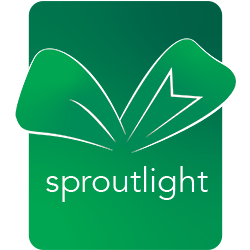
UP IS WHAT Now?
This week I decided to get serious with studying Japanese and started with Wanikani, an online system for learning kanji. Using a system of mnemonics and spaced repetition software (SRS) WK is designed to help you learn radicals, kanji, and compounds. First, you cram the new material into your brain, and then a few hours later WK will quiz you. Do well, and it'll extend the time until it asks you again. Miss one, and you'll see it again sooner. Repeat, repeat, repeat until learned.
What seems so promising about WK is that while it's relatively easy to learn a single use for a kanji, I've never had a system that was good about teaching me multiple uses of that kanji. I would learn that 上 is the preposition for UP, pronounced ue, and then off to the next kanji. When I'd see that 上 in a sentence, half the time it was being used in a sense I hadn't learned yet, a grammatical brick wall. WK isn't going to let me off so easy–instead, it makes me learn 上, 上がる, 上げる, and 上手 (up, to rise, to raise, and skilled) in rapid succession.
I'm also currently working on my preliminary literature review, linking affective experiences, conceptual schema, cognitive structures and language, and narrative. One part of this is looking at how language develops, and how the metaphoric words we use expose the way we've grouped ideas (schema). The idea of an UP is inherently linked to the experience we have as a person; UP requires a perspective, a vantage from which UP can be above. And having that sense of the relative direction, we have linked it to positive concepts: HAPPY IS UP so we can feel up and our spirits can rise, and GOOD IS UP so things can look up and hit a peak. These categories are complex, built from our physical experiences into a net of understanding, with tiny differences between UP, OVER, ABOVE, OUT, and ALONGSIDE all having linked but different ideas. In her book Story of Over, Claudia Brugman reportedly found over 100 related meanings for the word OVER! (More on all of this in Women, Fire, and Dangerous Things by George Lakoff.)
Which brings me back to my friend 上. Japanese kanji are inherently visual, and there's a visible representation in 上 as UP (especially when compared to down/下), so when I look at the vocabulary I'm learning I can see abstractly the connection. But I haven't internalized these connections quite yet. Instead, WK is teaching me mnemonics that make what is abstract to me now be relatable to my existing English-based mind. Today, I'm memorizing a toe on the ground (seriously!) but someday soon the words will form into internal links of meaning.
And so I keep going, day by day, using brute force to build the schema connections in my mind, all to the end that these meanings can become as natural and opaque as cognitive structures in my native language.
Which is all to say that researching the process while experiencing it is fascinating...enough so that I feel the urge to HAPPY IS UP jump for joy!
-CDKS
POSTED: July 15, 2019 | CATEGORIES: education social | TAGS: autoethnographylite cognitive structures japanese metaphors
{ Contents copyright © Callie Dominique Karlsson Speer 2000-2024 }